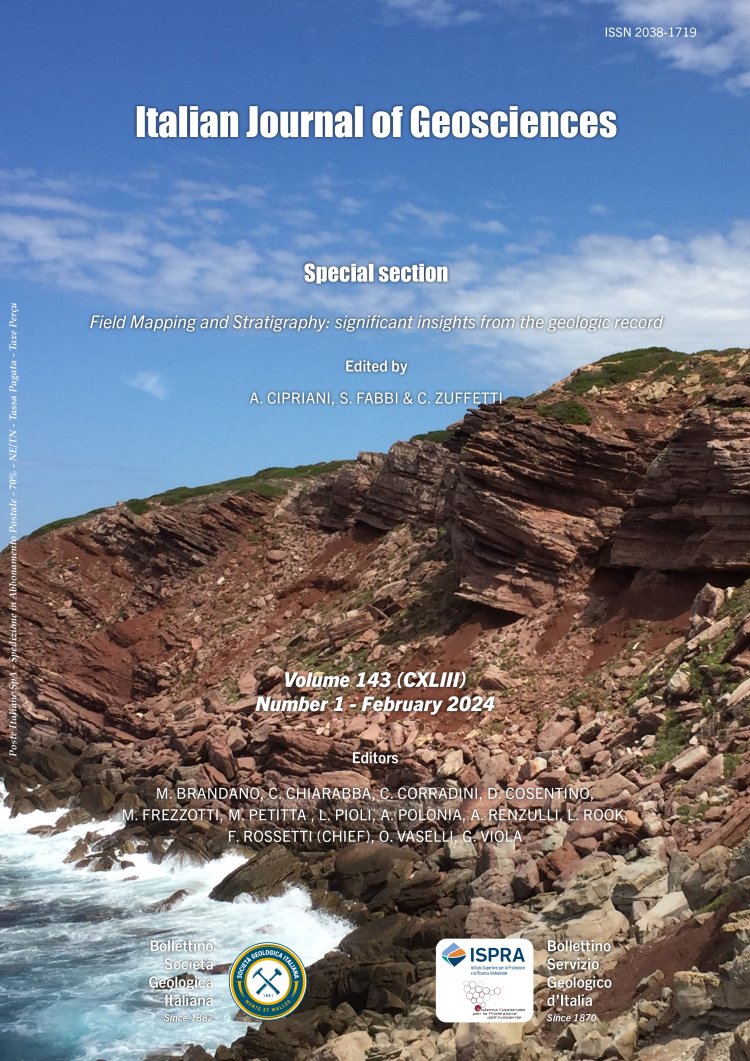
Early Eocene tectono-sedimentary evolution of northern Calabria: hints from the Paludi formation (Sila Greca)
Giulia Innamorati1, Simone Fabbi1, Johannes Pignatti1, Luca Aldega1 & Massimo Santantonio1
1Department of Earth Sciences, Sapienza Università di Roma, P.le Aldo Moro, 5, 00185, Rome, Italy.
Corresponding author e-mail: giulia.innamorati@uniroma1.it
Volume: 143 (2024) f.1
Pages: 130-154
Abstract
The Paludi formation is a dominantly clastic, and subordinately hemipelagic, stratigraphic unit which is exposed in northern Calabria (Sila Mts), resting unconformably either on deposits representing a Jurassic rift basin (Longobucco Basin), or directly on the Hercynian basement (granitoid rocks and low-grade metamorphites). Due to its sedimentological features, evidencing an array of mass transport deposits ranging from slumped beds, to debrites, to boulder beds and isolated exotic blocks, it can be considered as a whole as a Mass Transport Complex. Micropalaeontological analysis (benthic and planktonic foraminifera) on samples collected in the three lithofacies of the Paludi fm, and across the four tectonic units which characterize the present-day structure of the welded Longobucco/Paludi basin, consistently produced a latest Ypresian-earliest Lutetian age throughout. This age assignment places the Paludi fm in Alpine deformation times. The discovery of mappable synsedimentary normal faults, some re-utilizing Early Jurassic rift faults, indicates deposition at the periphery of an Alpine foredeep experiencing extension due to crustal bulging. Shortening of the welded Longobucco/Paludi basin only took place ca. 25 Myrs later, due to the rotation of the Sardinia-Corsica Block, pre-dating the opening of the Tyrrhenian Sea and deposition of the overlying thrust-sealing “late orogenic” succession which started in the Serravallian. On this evidence, we interpret the contractional structure of the Calabride Complex in northern Calabria as due to a proto-Apenninic orogenic phase.
Keywords
Get Full Text Supplementary Material